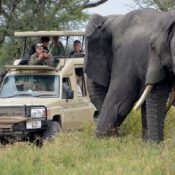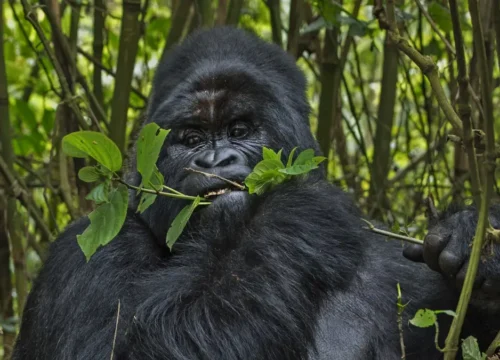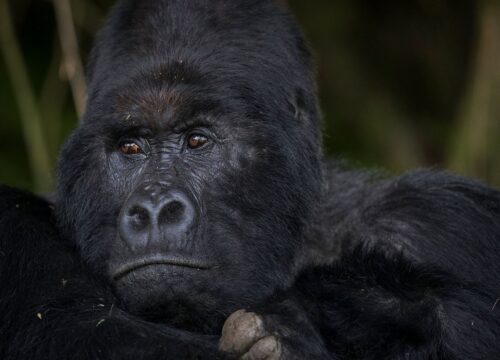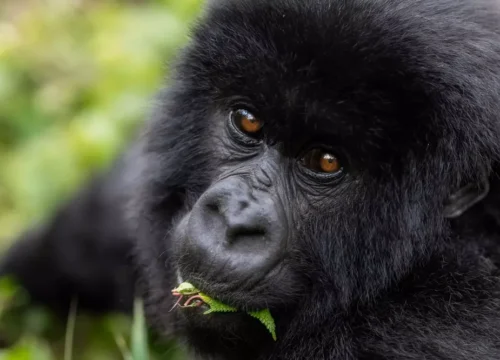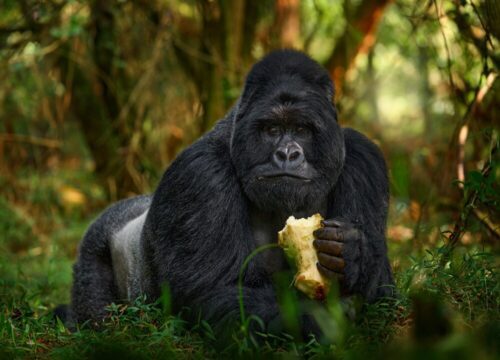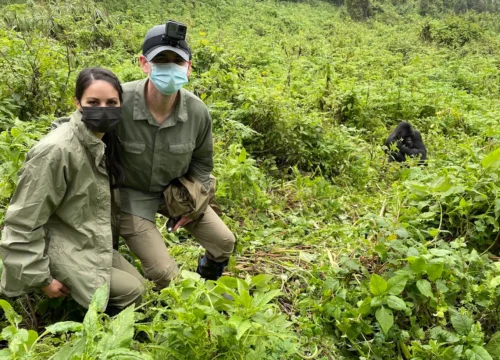Interesting Facts About Victoria Falls
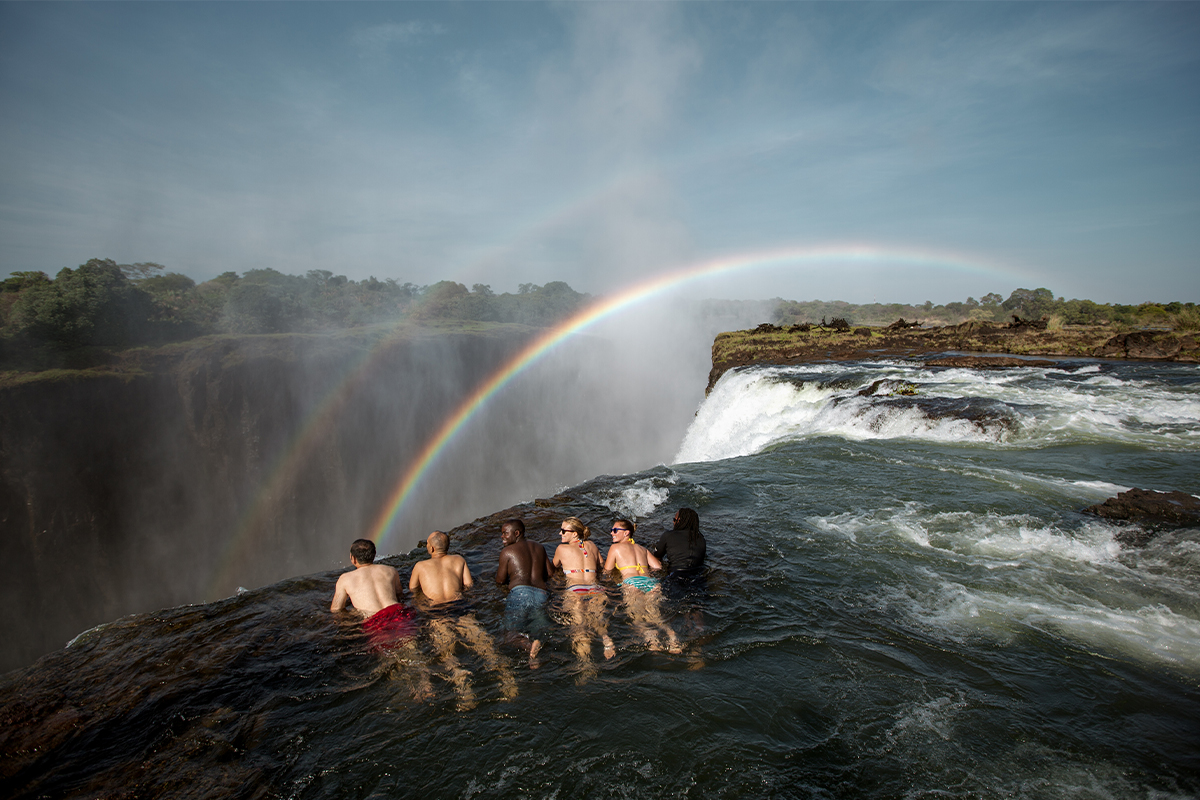
Interesting Facts About Victoria Falls, one of the most awe-inspiring natural wonders of the world, captivates millions of visitors each year with its breathtaking beauty and powerful cascades. Known as “Mosi-oa-Tunya” or “The Smoke That Thunders” by the local people, Victoria Falls boasts a rich history and a myriad of fascinating features. Here are some interesting facts about Victoria Falls that highlight its uniqueness and grandeur.
1. The Largest Curtain of Falling Water
Victoria Falls is renowned for being the largest curtain of falling water in the world. It stretches approximately 1,708 meters (5,604 feet) wide, creating a stunning and expansive view. The height of the falls ranges from 80 meters (262 feet) to 108 meters (354 feet), making it one of the tallest waterfalls globally.
2. Interesting Facts About Victoria Falls-Divided by Islands
The Zambezi River, which feeds Victoria Falls, is divided into various channels by islands at the crest of the waterfall. The most notable of these islands are Livingstone Island, named after the explorer David Livingstone, and Cataract Island. These islands provide unique vantage points for viewing the falls.
3. David Livingstone’s Discovery
Scottish explorer David Livingstone was the first European to see Victoria Falls in 1855. He was so impressed by the sight that he named it in honor of Queen Victoria. Livingstone’s exploration and subsequent writings brought global attention to the falls.
4. The Smoke That Thunders
The local name for Victoria Falls, “Mosi-oa-Tunya,” translates to “The Smoke That Thunders.” This name perfectly describes the continuous spray of mist that rises from the falls and can be seen from miles away, accompanied by the thundering sound of the water plunging into the gorge below.
5. A Natural Border
Victoria Falls forms a natural border between the countries of Zambia and Zimbabwe. The Zambezi River, which flows over the falls, serves as a boundary line. Both countries have designated national parks—Mosi-oa-Tunya National Park in Zambia and Victoria Falls National Park in Zimbabwe—where visitors can view the falls.
6. Seasonal Variations
The flow of water over Victoria Falls varies dramatically with the seasons. During the rainy season (November to April), the volume of water increases significantly, creating a powerful and expansive curtain of water. In the dry season (May to October), the water flow decreases, revealing more of the rock formations and enabling unique activities like swimming in the Devil’s Pool, a natural rock pool at the edge of the falls.
7. Rainbows and Moonbows
Victoria Falls is famous for the rainbows that form in the mist created by the falling water. On sunny days, vibrant rainbows are a common sight. Additionally, during a full moon, visitors can witness a lunar rainbow or “moonbow,” a rare and enchanting phenomenon caused by moonlight reflecting off the mist.
8. World Heritage Site
In 1989, Victoria Falls was designated a UNESCO World Heritage Site, recognizing its outstanding universal value and the need for its preservation. The falls are protected within national parks in both Zambia and Zimbabwe, ensuring their conservation for future generations.
9. Geological Marvel
Victoria Falls is part of the geological marvel of the Zambezi River, which has carved out deep gorges over millions of years. The falls are situated on a plateau of basalt rock, which has been eroded by the river to create the dramatic cliffs and gorges that define the area.
10. A Rich Ecosystem
The constant mist from Victoria Falls supports a lush rainforest ecosystem along the edge of the falls. This unique environment is home to diverse plant and animal species, including many bird species such as the Taita falcon and Verreaux’s eagle, as well as mammals like baboons and vervet monkeys.
11. Adventure Activities
Victoria Falls is a hub for adventure activities. Visitors can engage in thrilling experiences such as bungee jumping from the Victoria Falls Bridge, white-water rafting in the turbulent rapids below the falls, and taking helicopter flights for a bird’s-eye view of the falls and the surrounding landscape.
12. The Victoria Falls Bridge
Constructed in 1905, the Victoria Falls Bridge spans the Zambezi River just downstream of the falls, connecting Zambia and Zimbabwe. The bridge was part of Cecil Rhodes’ vision for a railway that would stretch from Cape Town to Cairo. Today, it is a popular spot for bungee jumping and provides stunning views of the falls.
13. Historical Significance
Victoria Falls has long been revered by the local tribes, who considered it a sacred site. The Kololo tribe, who inhabited the area in the 19th century, gave the falls the name “Mosi-oa-Tunya.” The falls continue to hold cultural and spiritual significance for the local communities.
14. Livingstone Island
Named after David Livingstone, Livingstone Island is located on the edge of the falls and offers a unique perspective of Victoria Falls. Accessible during the dry season, the island is a popular spot for adventurous visitors to swim in the Devil’s Pool and peer over the edge of the falls.
15. A Photographer’s Paradise
Victoria Falls is a paradise for photographers. The dramatic landscapes, vibrant rainbows, and ever-changing light conditions provide endless opportunities for capturing stunning images. The falls are especially photogenic during sunrise and sunset when the light casts a golden hue over the water and mist.
16. Microclimate
The mist from Victoria Falls creates a microclimate that supports a unique rainforest ecosystem. This microclimate is characterized by high humidity and frequent rainfall, which nurtures the dense vegetation along the cliffs and attracts a variety of wildlife.
17. The Boiling Pot
The Boiling Pot is a large whirlpool at the base of Victoria Falls, where the Zambezi River’s water churns and swirls before continuing its journey through the narrow gorges downstream. It is a dramatic and powerful feature, illustrating the immense force of the falling water.
18. Tourism Hub
Victoria Falls is a major tourism hub, attracting visitors from around the world. The towns of Livingstone in Zambia and Victoria Falls in Zimbabwe offer a range of accommodations, restaurants, and activities, making it easy for travelers to explore and enjoy the falls.
19. Conservation Efforts
Conservation efforts are in place to protect the natural beauty and biodiversity of Victoria Falls. Both Zambia and Zimbabwe have implemented measures to preserve the falls and the surrounding environment, ensuring that this natural wonder remains intact for future generations.
20. Iconic Status
Victoria Falls holds an iconic status among the world’s natural wonders. Its sheer scale, dramatic beauty, and unique features make it a symbol of Africa’s natural heritage and a must-visit destination for travelers seeking awe-inspiring experiences.
21. The Devil’s Pool
The Devil’s Pool is a natural rock pool located on the edge of Victoria Falls, accessible during the dry season. Thrill-seekers can swim in the pool and peer over the edge of the falls, experiencing the sensation of being right at the brink of the precipice.
Conclusion
Victoria Falls is a place of immense natural beauty, rich history, and thrilling adventure. From its status as the largest curtain of falling water to its unique rainbows and microclimate, the falls offer a wealth of fascinating features and experiences. Whether you are a nature lover, an adventure seeker, or a history enthusiast, Victoria Falls has something to captivate and inspire you. Plan your visit with Nextgen Safaris, and discover the magic of Victoria Falls for yourself.
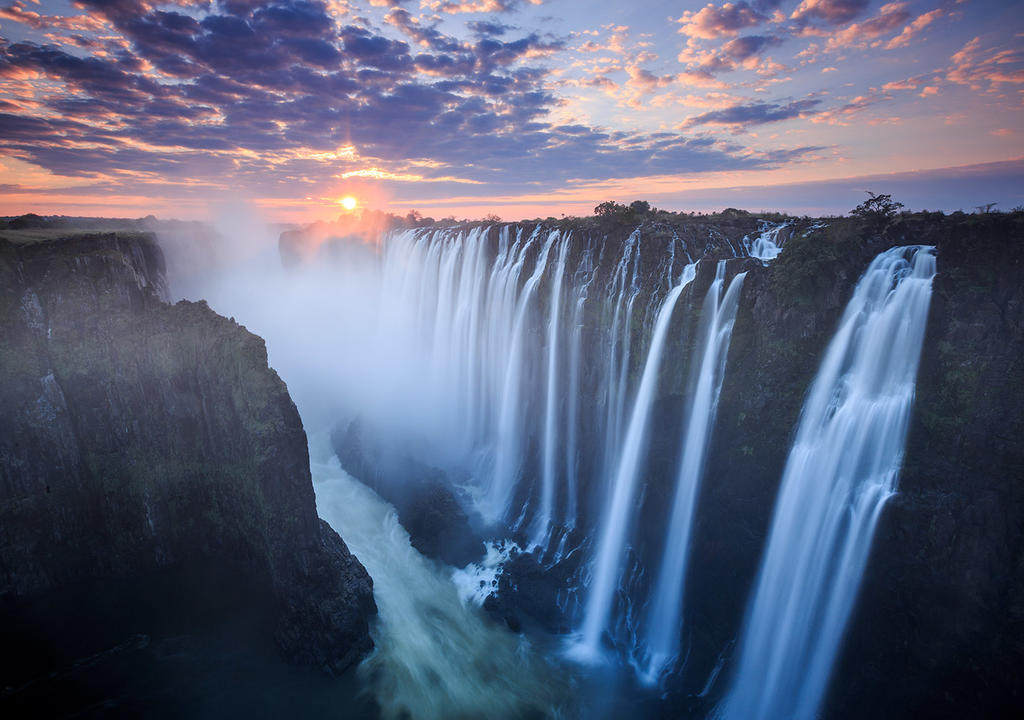
GENERAL INFORMATION
ENTRY REQUIREMENTS:
All visitors to Victoria Falls must have a valid passport with at least 4 consecutive blanks pages. The Government of Tanzania has rolled out an online Visa application portal accessible on internet. Any applicable visa and/or relevant documentation are the responsibility of the traveler. For further information on Visa requirements visitors are advised to contact their nearest Zimbabwe Embassy or Consulate.
LANGUAGE: English
TIME: GMT +3
CLIMATE: Southern Africa climate is predominantly tropical. The long rains are from mid-March to late May and the short rains from November to January. The hottest months are from October to February and the coolest months are June to August.
VOLTAGE: 220 Volts/AC50Hz. Sockets are UK style, 3 pin square plugs. Power is from the National Grid in the city/major towns and generator with inverter back up in the Safari Lodges and Camps.
CURRENCY: Foreign currency must be changed at the Bank, Bureau de Change, and Hotel/Safari lodge/Camp/Resort. Major Credit Cards, Master card, Visa, American Express, are usually accepted throughout the country. Where credit cards are accepted, the payment will normally be recorded in US$ regardless of the card’s default currency. However, US$ older than 2009 are only accepted
CLOTHING: Dress is mainly informal and should be comfortable as well as practical. Something warm should be brought along for early morning and evenings. Safari clothes are available from hotels/lodges/camps.
BAGGAGE: Where possible, travel light. Baggage space on safari is limited to medium suitcase or soft bag per person plus reasonable amount of hand luggage. There is 15 Kilogram per person limit on all flights to the wildlife sanctuaries. Excess luggage must be stored in your arrival hotel.
WATER: You will find many different of opinion of what is safe and what is not. We recommend for peace of mind, to drink local Bottled Mineral water. It is important to drink plenty of water especially during the hotter months. We would recommend that guests drink at least 2 to 3 litres of water per day to limit the effects of dehydration.
HEALTH: Southern Africa is a safe and secure destination; however, it is a good idea to take a few precautions. Kindly consult your GP or local doctor at least 6 weeks before you travel, with regards:
Malaria prophylactics. East Africa is a known malaria area and preventive measures are essential. You are advised to take one of the recommended anti-malarial drugs. Be sure to wear long sleeved shorts and trousers after sunset and spray the exposed parts of your body with a mosquito repellent spray. The hotels provide mosquito repellent sachets as part of the room’s amenities in all our locations.
Remember to protect yourself from direct sun rays with sunscreen cream or safari hat.
DIETARY REQUIREMENTS: For those guests with specific dietary requirement, please ensure Imbasa is notified prior to travel so that the respective Hotels and Lodges are informed
GRATUITIES: As a guideline and dependent on how happy you are, we would suggest the following:
The General Hotel/Lodge/Camp Staff – Approximately U$ 10.00 per person per day
Driver Guides – Approximately US$ 15.00 to US$ 20.00 per person per day
PHOTOGRAPHY: Please be careful when photographing public buildings, airports, bridges, the national flag and people in uniform. Ensure that you have sought permission before photographing local people and their villages. If in doubt, please check with your guide.
Read about
10 Things you Should NOT DO on an African Safari.
What to expect on a safari in Uganda.
Bwindi Impenetrable National Park
How to Choose the Best Tour Operate for Your Safari in Africa
12-Day Gorilla Tracking in Bwindi
East African Safaris
1 Day Jinja Ultimate tour Experience
1 Day White Water Rafting in Jinja
3 Days Bwindi Gorilla Habituation via Rwanda
3 Day Birding Safaris and Photography in Uganda
3 Day Safari to Queen Elizabeth National Park
3 Day fly in Gorilla Trekking Safari from Masai Mara
3 Day Grand Gorilla Trekking Safari
4 Day Chimpanzee and Gorilla Trekking Safari
4 Day Murchison Falls and Jinja tour
Packages with Gorilla Trekking
1 Day Uganda Gorilla Trekking Safari from Kigali Rwanda
3 Days Fly in Gorilla Habituation Safari
3 Days Budget Gorilla Safari in Uganda
3 Days Customizable Rwanda Gorilla Tracking Safari
3 Days Gorilla Trekking Experience and Lake Bunyonyi
3 Days Last Minute Gorilla Trekking & Lake Bunyonyi in Uganda
3 Days Rwanda to Uganda Gorilla Safari
3 Days Uganda Gorilla Safari from Kigali
4 Days Gorilla and Golf Safari in Uganda
4 Days Rwanda Gorilla Adventure
5 Day Gorillas and Game Drive Safari
5 Days Golf and Gorilla Safari in Uganda
5 Days Rwanda Gorillas and Culture Tour
6 Day Uganda Gorilla and Wildlife Tour
6 Days Budget African Safari with Gorilla Trekking
7 Days Gorilla and Chimpanzee Trekking in Uganda
7 Days Uganda Budget Gorillas and Primate Trip
8 Days Gorilla Trekking Vacation to Bwindi National Park
8 Days Uganda Gorilla and Chimpanzee Safari
10 Days Rwanda and Uganda Gorilla Safari
14 Days Uganda Rwanda Study Tour & Gorilla Trekking Trip
Best African Destinations Itineraries
Southern Africa Destination Itineraries
Eastern Africa Destination Itineraries
Northern Africa Destination Itineraries
Indian Ocean
Recent Posts
Last Minute Deals
Quick booking process
+49 1575 4711313



